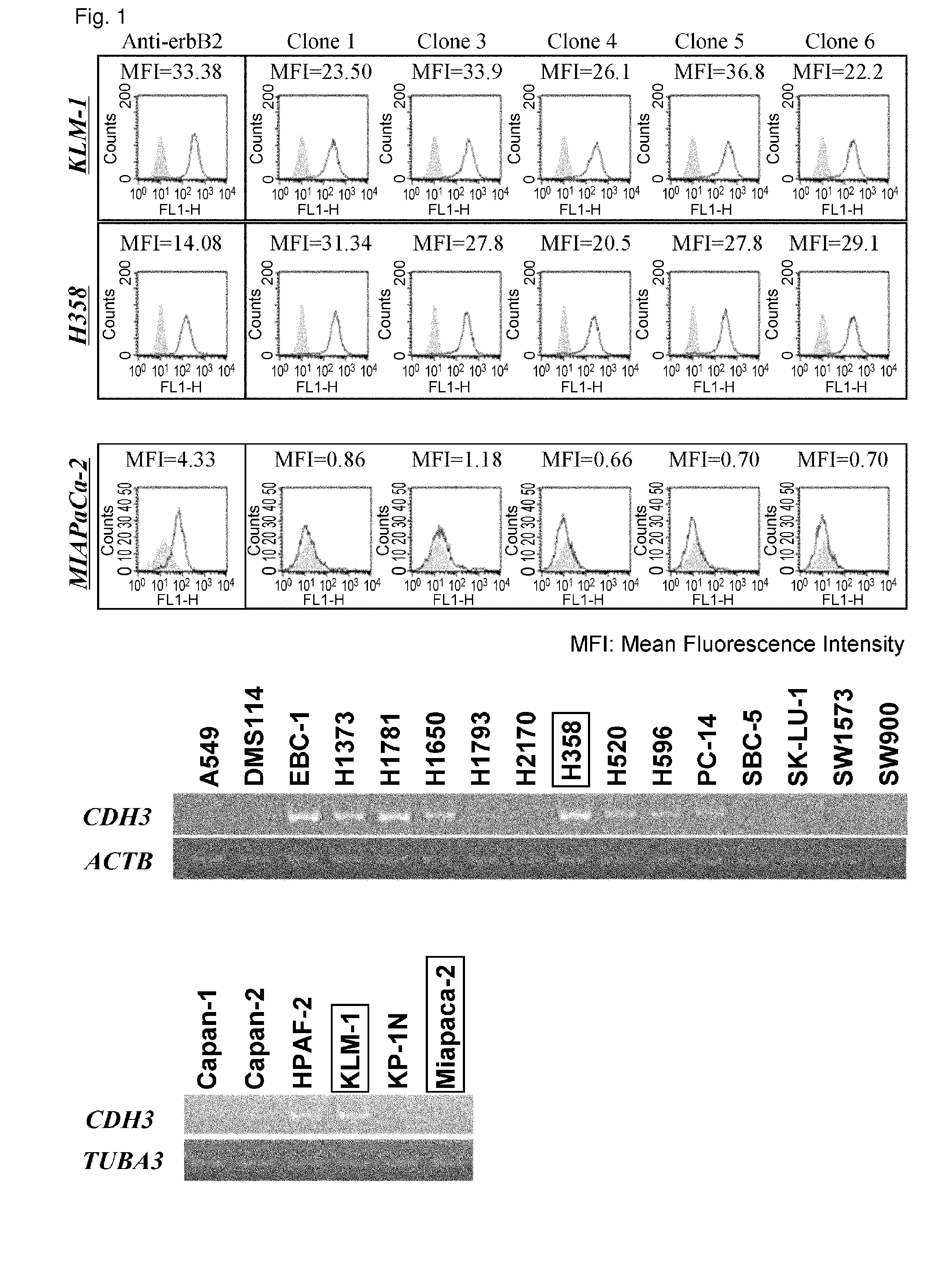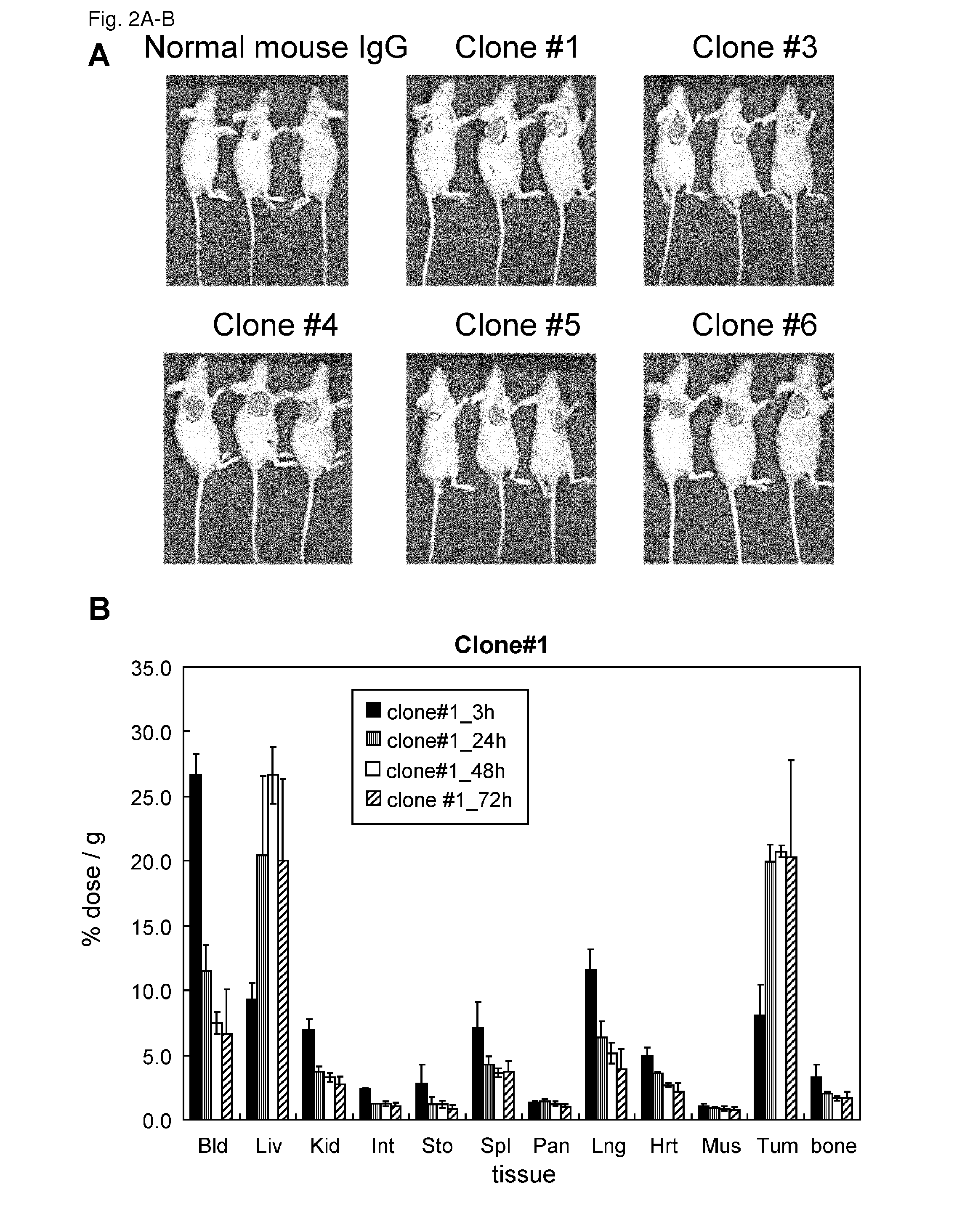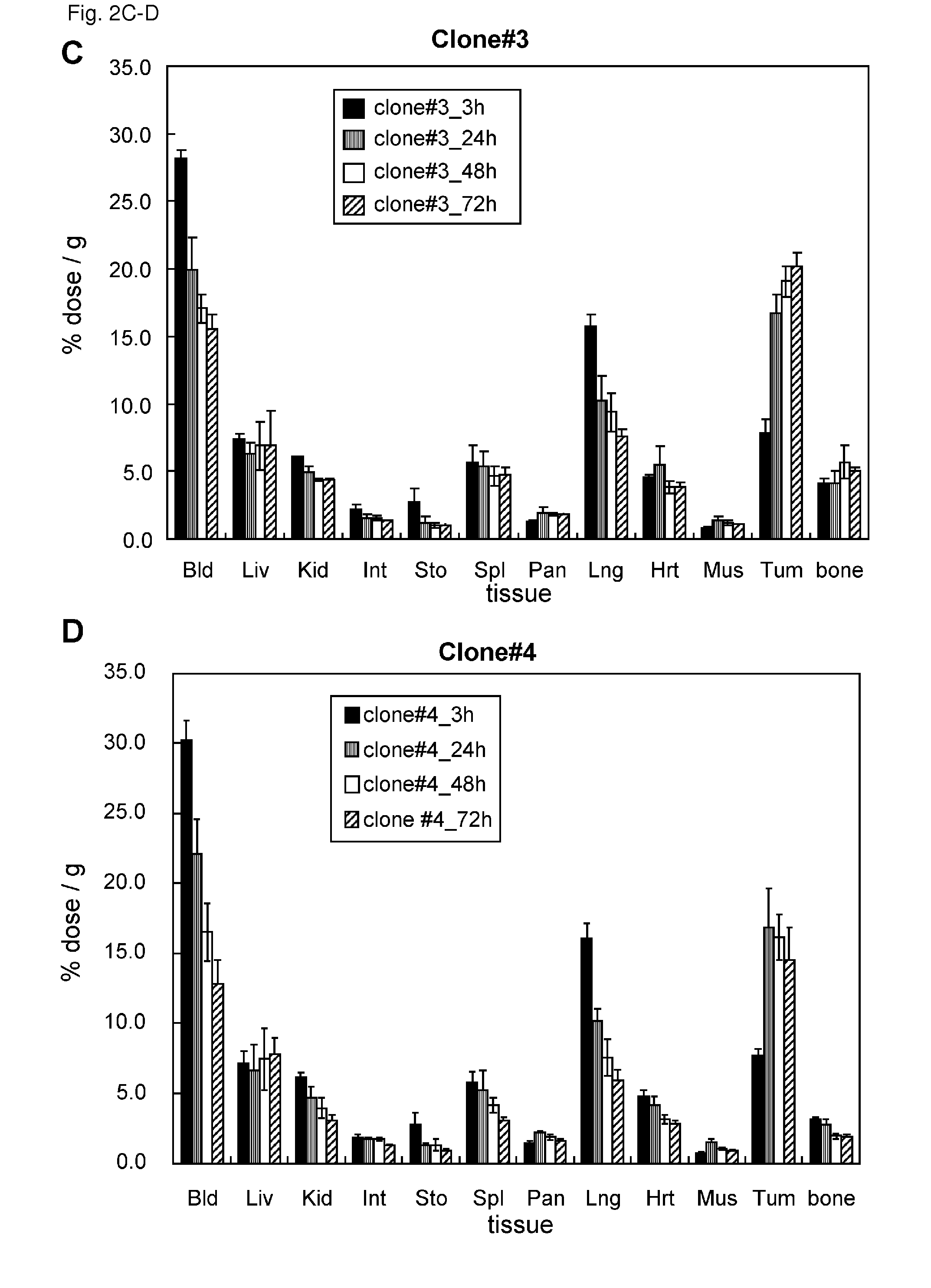Anti-CDH3 antibodies labeled with radioisotope label and uses thereof
- Summary
- Abstract
- Description
- Claims
- Application Information
AI Technical Summary
Benefits of technology
Problems solved by technology
Method used
Image
Examples
examples
[0184]Below, the present invention is further explained based on Examples.
Materials and Methods
Antibody Production.
[0185]CDH3 gene encoded extracellular domain (SEQ ID NO: 3) was amplified from cDNA pool derived from cancer cells. The product was cloned into the pcDNA3.1 (Invitrogen, CA). To produce CDH3-specific antibody, mice were immunized subcutaneously with the domain expression vector (17.5 mcg / injection) every two weeks for a month. After the confirmation of the titer of antisera, spleenocytes were extracted from the mice and fused to myeloma cells to prepare hybridomas. We screened the hybridomas which can recognize native CDH3 antigen on the surface of the cancer cells. Through the screening, it was revealed that hybridoma clone #6 produced antigen-specific antibody at high level, therefore this clone was selected to produce antibody for further experiments. The hybridoma clone #6 was used to inject intraperitoneally into mice. The ascites was recovered after 2 to 3 weeks. ...
PUM
| Property | Measurement | Unit |
|---|---|---|
| path length | aaaaa | aaaaa |
| pH | aaaaa | aaaaa |
| volume | aaaaa | aaaaa |
Abstract
Description
Claims
Application Information
 Login to View More
Login to View More - R&D
- Intellectual Property
- Life Sciences
- Materials
- Tech Scout
- Unparalleled Data Quality
- Higher Quality Content
- 60% Fewer Hallucinations
Browse by: Latest US Patents, China's latest patents, Technical Efficacy Thesaurus, Application Domain, Technology Topic, Popular Technical Reports.
© 2025 PatSnap. All rights reserved.Legal|Privacy policy|Modern Slavery Act Transparency Statement|Sitemap|About US| Contact US: help@patsnap.com



